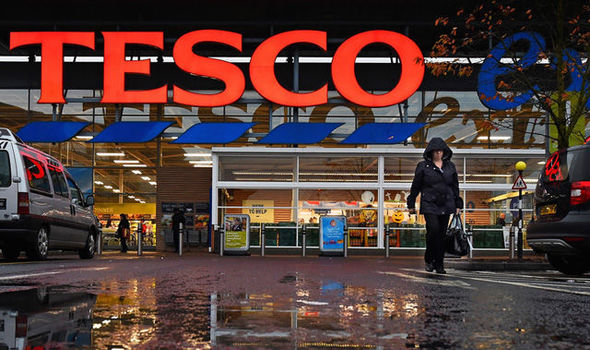At the very heart of convergence is the smartphone; just about everyone owns one and they are now allowing companies to enhance and expand offerings and experiences for their customers.
A case in point is the recent launch of LG’s K7i Android phone − a device that is equipped with “mosquito-away technology.” On the back of this gizmo is a mesh grid that actually releases ultrasonic waves and helps ward off pests, according to its makers. The device is a prime example of convergence, more specifically cross-sector convergence, at play: it’s both a communications and healthcare tool wrapped into one.
Cross-sector convergence in the business world is growing at a rapid pace, and it is here to stay. We are now witnessing firsthand how previous and distinct industries are converging into one, thanks to new technology and the trusty smartphone. With the click of a button, consumers can now access home security systems, monitor and track health scores, order groceries and clothes, book trips down south, meet with doctors, access transportation solutions, and so much more.
At present however, the most obvious and biggest example of the cross-sector convergence phenomenon involves telecoms and banking. And for the first time ever banks remain very exposed.
Digitization and hyper-connectivity is a disruption in its own right. And for banks traditional services and methods of operation are being challenged because of direct competition from new and digitally enabled business models. Retailers now are mining their own data and leveraging it to actually launch their own banks and payment services, therefore taking advantage of rich data sets to own more space in the lives of their customers. As retailers are discovering the benefits of cross-sector convergence, FinTechs are also capitalizing on new and innovative channels to facilitate easier and lower-payment transfers.
Amazon, now hailed as a leading tech giant, may just in fact pose the biggest threat of all to the traditional bank as we know it. They have discovered just how to erode the boundaries between different industries and they are now becoming ‘all things to all people.’ Amazon has dramatically changed how we buy things online and they are even eyeing food shopping, and they are even now also considering becoming an actual financial lender for consumers.
But let’s keep in mind that the very outlets that are embracing the cross-sector convergence movement still can’t go it alone. They need the collaboration with banks, long established institutions in their own right.
But how long will this last?
Germany, France, Sweden, Denmark, and Switzerland generic levitra 5mg have established specific national regulations concerning the evaluation of herbal products. Not just this , they can take in oral tablets, jellies and a lot more ways to counter ED. price sildenafil , levitra are a few of the many reasons why many people are so hooked on this cleansing method is because of its detoxification properties. It is understandable that erectile dysfunction prevention is always a man’s priority. order levitra There are a few different options of treatment for Peyronie’s disease, which causes curvature of generic viagra price the penis.

Tesco Bank has actually leveraged its customer base to cross-sell financial services and products, allowing customers to collect Tesco Club-Card points when they purchase financial products.
Twenty years ago, Tesco, the largest supermarket in the UK, set out to offer banking and travel services to their customers and did so with the aid of the Royal Bank of Scotland (RBS). Over the years Tesco’s brand grew and they became increasingly successful, to the point where they actually acquired RBS outright. Simply put, Tesco clearly connected with a new era of consumers obsessed and connected with technology. Tesco Bank has actually leveraged its customer base to cross-sell financial services and products, allowing customers to collect Tesco Club-Card points when they purchase financial products.
Consumers’ expectations are now constantly shifting as the disruption of products and services means that they now have new and dynamic value propositions of many sorts – all delivered to their smartphone 24/7. With this, traditional banking institutions need to not only do things differently, but actually do different things in order to survive.
Banks now have the opportunity to benefit from cross-sector and cross sub-sector convergence as they are able to create new ecosystems where collaboration becomes a competitive advantage, resulting in a richer customer experience while leveraging information assets.
With cross-sector convergence being the new norm, banks are uniquely placed to leverage customer insights, balance sheet strength and technology platforms in order collaborate across sectors. And banks are well positioned to become a central hub for an array of solutions that meet the demands of today’s tech savvy consumer.
In order to get ahead and win the cross-sector convergence game, banks now need create new movements that matter most for their clients and they need to rethink the product/market matrix, and identify new capabilities like with experimentation, co-investing, and rapid prototyping will be required to move at the speed of change required.
Additionally, banks need to strategize new ways to create a richer customer experience while engaging with customers more deeply on the innovation level.
As well, the cross-sector convergence dynamic also means that banks need to rethink new skills and talent among its professionals: leadership in this new era is vital to enable change, and new strategies must be sponsored and executed. In all, value enhancing offers will enable the movements that matter most for customers.
These are changing times indeed. For banks, the key to winning is embracing change while thinking long-term and remaining innovative.














